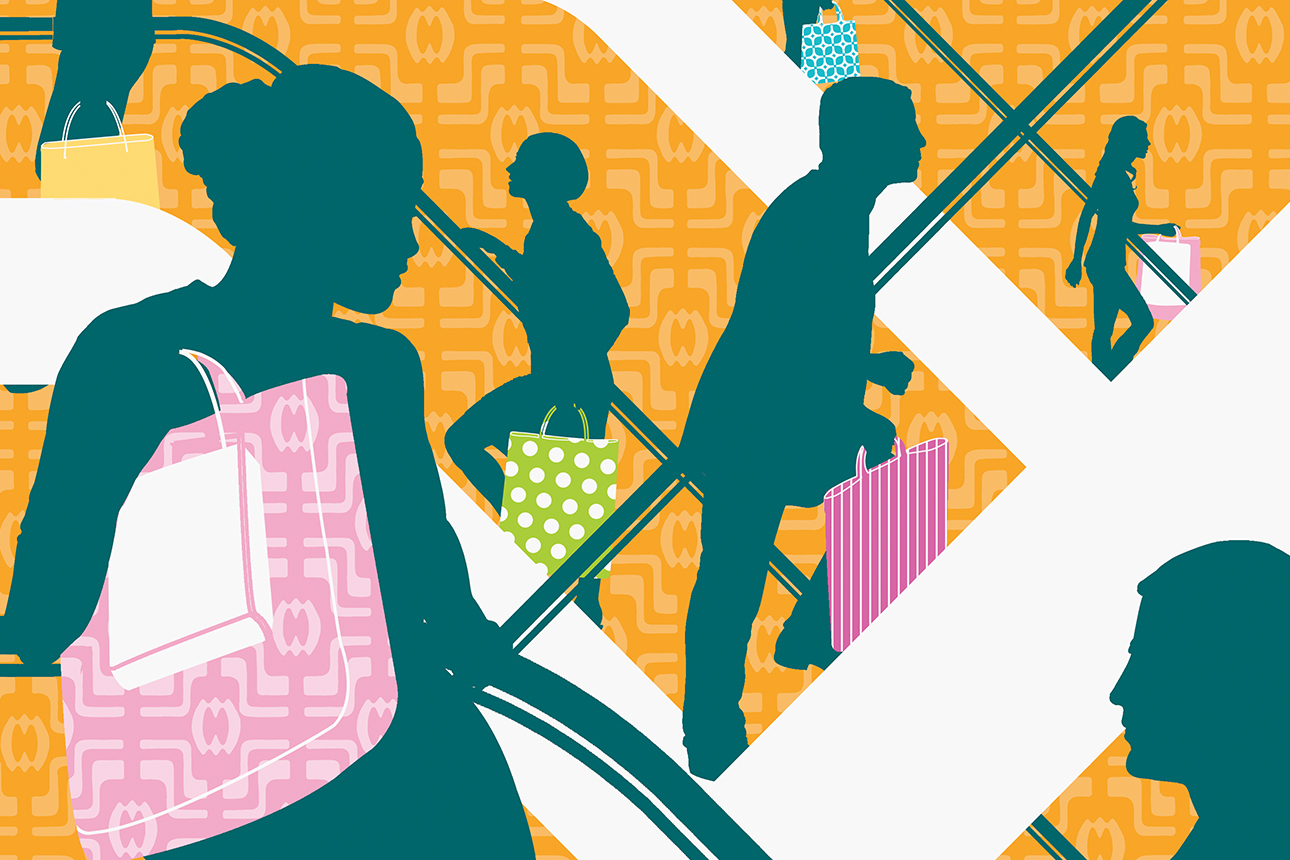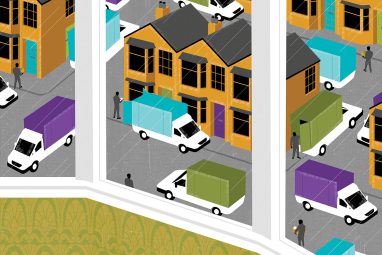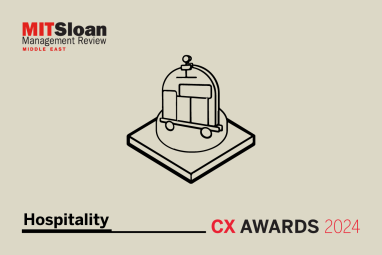What Successful Brick-and-Mortar Retailers Get Right
From virtual snowstorms to golden locker boxes, today’s thriving stores feature experiences shoppers can’t get online. Consider five successful tactics.
Topics
News
- Gulf Nations Fast-Track AI Ambitions, UAE Leads Regional Readiness, says BCG Report
- AI Professionals form a Redefined Workforce. But Systemic Roadblocks Persist, Survey Finds
- AI-Driven Scams Surge as Microsoft Blocks $4 Billion in Fraud Attempts
- Identity-based Attacks Account for 60% of Leading Cyber Threats, Report Finds
- CERN and Pure Storage Partner to Power Data Innovation in High-Energy Physics
- CyberArk Launches New Machine Identity Security Platform to Protect Cloud Workloads

Neil Webb/Ikon Images
Many retailers with physical stores have felt as if they have been fighting for their lives during the past decade. A constant stream of media and industry analysis has poured cold water on the retail channel, documenting how stores have closed at a faster rate than at the peak of the Great Recession in 2008. This so-called retail apocalypse’s casualties have included behemoths like Mothercare, Best Buy (which in March announced plans to close 10 to 15 stores by year’s end), and Toys R Us (which filed for bankruptcy in 2017, closed all U.S. stores in 2018, and is now trying to mount a comeback featuring experience-based stores in locations like Mall of America). Despite the doomsayers, some retailers have piloted adaptive change, even as their peers have struggled to evolve. This supports the assertion that brick-and-mortar retail is simply in a state of correction — a period of change and rebound.
While no silver bullet solution exists, many lessons can be gained from organizations that have been skillful during this challenging time. Retailers should ask themselves these three overlapping questions:
- How do we deliver value that isn’t easily replicated in the online channel?
- How can we curate our in-store shopping experience to be more fun and memorable?
- How do we reward shoppers for making the effort to visit us in store?
Five Brick-and-Mortar Retail Tactics That Work
Based on research and experiments on visual merchandising, this article puts forward five innovative tactical interventions (spelling the acronym STORE) as a starting point of inspiration for retailers. If your organization’s answer to one or more of the above questions reveals deficiencies, consider which of these tactics could help you attract more shoppers.
S: Integrate Hands-On Sensory Experiences
When we shop, we use our hands, ears, nose, and mouth in conjunction with our eyes. A parallel can be drawn to a visit to a fine dining restaurant, where a plethora of smells, as well as visual and auditory cues, complement the taste of the food. Retail shoppers yearn for a rich and holistic sensory experience. Unfortunately, many stores are designed and organized in a way that suppresses rather than embraces this need. Displays resemble what is found in the online channel, with merchandise hidden behind screens or packages stacked on top of one another. Why would customers be motivated and inspired to visit for this type of experience?
Some successful retailers have figured out that one answer lies in the orchestration of a more hands-on experience. This isn’t a new idea, but some stores have added novel twists. Recall the now-famous study by Larence Williams and Joshua Ackerman, who implored shoppers to “Please touch the merchandise.” They argued that if shoppers touch an item, they develop an attachment to it. For fashion accessories brand Olivia Burton, details in its Covent Garden location in London focus on creating such a physical experience. Shoppers can customize watch styles to individual tastes and are actively encouraged by staff members to touch, play with, and take photos of merchandise on display. Cosmetics brand Aesop leans more into the olfactory (smell) side of the sensory experience. Trained front-line employees apply sample products directly to customers, using washroom facilities built within the shop floor. Staff members are trained as “hosts,” asking questions such as “How does that feel or smell on your skin?” Customers can even book appointments for this experience in key locations.
Integrating touch, smell, and sound into the store environment should be considered in ways that enhance the shopper experience. Policies should be tastefully implemented with the brand and category foremost in mind. For instance, it may not be image-appropriate for shoppers to be continuously touching merchandise in a high-end jewelry store, so finding appropriate cues is as important as embracing the need for them.
T: Tell and Facilitate Brand Stories
Steve Jobs understood the power of the narrative when he said, “The storyteller is the most influential person in the world.” Brand (and product) stories serve as potent tools for connecting and evoking desirable emotions. Nonetheless, retailers generally favor their website and social media pages for storytelling. But retail can be like theater — a medium for captivating and engaging an audience with effectively communicated messages. When done well, it can be far more convincing than a webpage.
Consider how the Five Guys burger chain tells stories. Within each restaurant, visual material (like photographs and graphics) feature extracts from feature reviews in popular publications. These stories reinforce Five Guys’ heritage as a high-quality-but-every-person brand with humble origins. In its Oxford Street store in London, lifestyle brand Vans takes a similar approach at the product level, using wall and display space to showcase insights about merchandise while in-store designers customize pairs of sneakers in real time. Customers can also be a vessel for salient brand messages. For example, British bicycle manufacturer Brompton demarcates space for community activity in its flagship London store where users can come together to share their ownership stories while trained mechanics service customers’ bikes.
Overall, few retailers today deploy physical space in supporting brand storytelling — even though it can be achieved relatively easily. Retailers should consider whether they could benefit from simple approaches focusing on company heritage (for example, founder pictures or stories) or more creative strategies using space in an integrated manner to weave specific narratives about products. Remember that people “buy” and “relate” positively to engaging stories.
O: Reward Customers With Original Incentives
When working to attract more shoppers to physical locations, retailers must think critically about how to incentivize this. Of course, one strategy is to offer merchandise that is available only in store. This is quite common in luxury markets — especially for high-value timepieces. Think about the Rolex model: You can only buy in store, and you must visit a store to get on a waiting list for popular watches. In other categories, attractive incentives look different. British grocery retailer Asda is renowned for such initiatives. During the cold winter month of February, shoppers were gifted a warm breakfast (porridge) and a hot drink in any of its 200-plus cafes. Asda relies on the fact that shopping-cart values will often be higher when shoppers actually visit in person. In other cases, a retailer could invite shoppers to stores to try a product before a high-profile launch.
Establishing appropriate incentives may not always be straightforward, but primary and in-depth qualitative research with existing customers can help. Look for initiatives that differ from what can easily be offered in the online channel. Finding the sweet spot, where both footfall and sales growth increases, will possibly require periods of experimentation.
R: Reveal Merchandise to Create Suspense
People shop for utilitarian and pleasure reasons. Adventure shopping reflects the pleasure and thrill-seeking motivation shoppers feel when the hunt is seen as a form of sport. Among the ways retailers can take advantage of this, gamification has risen in popularity. According to a 2015 study by Boston Retail Partners, 87% of top retailers in the U.S. were considering gamification as high priority.
Gamification is a sizable topic in its own right, but marketing scholar Vanessa Patrick suggests that stores should go further by unveiling or revealing merchandise to shoppers (rather than simply showing it). When retailers do this, the shopper’s feelings of positive arousal amplify, along with intrigue and excitement — outcomes not too different from when we unwrap a special gift. 24 Kilates, a luxury sneaker brand in Bangkok, has leveraged this perfectly. Sneakers are showcased in floor-to-ceiling gold adorned lockers, resembling a bank vault. To access the merchandise, customers can explore each unit, one at a time. Beauty-products retailer Harmay also prioritizes discovery as a strategy, in its Hong Kong store.
How might retailers build similar models into their offerings? Depending on the channel, a simple tactic might be to leverage front-line employees. In certain luxury stores, items are not displayed at all. Customers must request merchandise, which is then fetched and unveiled by staff members.
E: Build a Portal for Escapism
Visitors to Las Vegas may feel like they’re experiencing places farther afield than just the Nevada desert. Whether it’s eating at the top of the Eiffel Tower in Paris, enjoying the canals of Venice, or experiencing the pyramids of Egypt, Las Vegas hotel complexes sell an escapist experience to patrons. Shopping can also be an escapist activity, especially when retailers can transport shoppers elsewhere through the store architecture.
According to a study in Total Retail, 43% of shoppers report being willing to spend more inside stores that offer an immersive experience. Danish company Lego manages to achieve this goal in its London store in Leicester Square. Designed to be a safari of relatable adventures, the store’s floor space areas are partitioned into scenes from popular books and films. Shoppers line up outside just to experience cashing a (Lego) check at Gringotts Wizarding Bank from Harry Potter or to appreciate the details of James Bond’s Aston Martin, all made from tiny Lego bricks.
Alternatively, in Canada Goose’s store in Toronto, shoppers visit a different, rather harsh, climate — but all in the name of being immersed. A cold room reportedly chilled to about 10 F (minus 12 C) and featuring a virtual snowstorm provides a realistic glimpse of what the products can do.
In a different vein, Chanel in Paris creates escapism by eliciting memories. Despite the store’s modern architecture and design on the Champs-Élysées, the luxury brand showcases its most exquisite pieces on antique oak pedestals. This infrastructure feels more like a natural history museum than a high-end retailer — but this tactic is deliberate. Research has shown that such cues induce shopper memories concerning the world of art, such as visits to galleries and museums. These infuse merchandise with qualities normally reserved for priceless exhibits featuring Monet and Rembrandt. The result? Shoppers perceive merchandise as more luxurious and worthy of intrigue.
In these examples, retailers curate an imagination-based experience. Shoppers are given the opportunity to escape beyond the physical store location. This escapism may be geographical or fantasy-focused, or simply trigger internal memories. But it is important to maintain a degree of congruence, or fit, between this decision and the brand and merchandise. Take again the case of Canada Goose. The novel experience works to enhance customer perceptions of merchandise quality.
In the movie Field of Dreams, Kevin Costner’s character hears someone whisper, “If you build it, he will come.” In the past, this could be mistaken for a legitimate retailing strategy. But the days of simply setting up shop in higher footfall areas and accruing reward are over. Modern-day shoppers demand more from retailers. At the same time, the gift of physical space offers significant (and often untapped) opportunities for reinforcing and enhancing key brand messages and narratives — again, in ways that would be difficult to replicate and provide in the online channel.
In-house retail and merchandising teams can consider the STORE tactics as a starting point for thinking about and experimenting with their processes. As Howard Schultz, former CEO of Starbucks, famously remarked, “If there’s a sense of entertainment and excitement and electricity, you wanna be there.”





